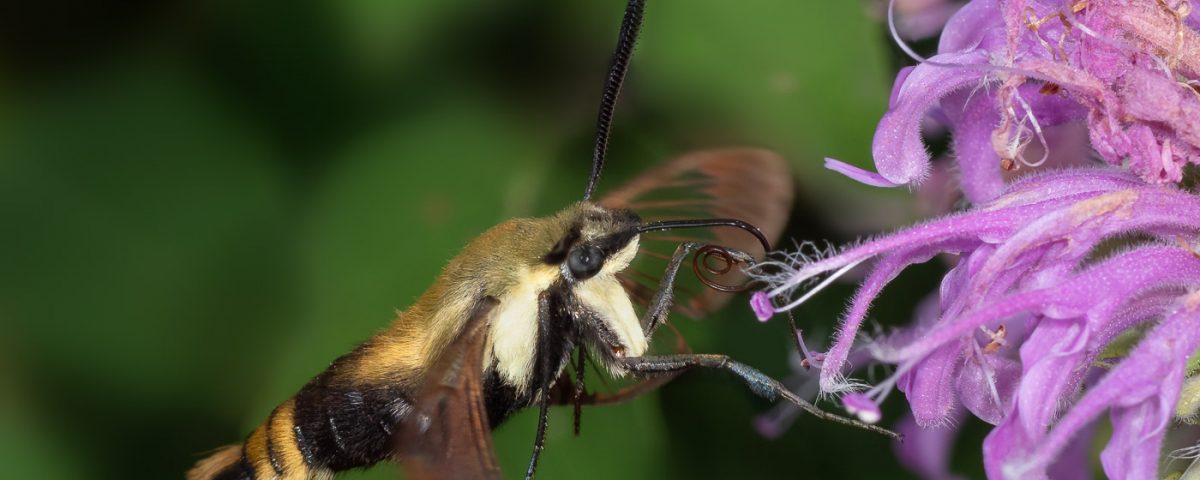Snowberry Clearwing

Extrafloral Nectary
August 19, 2022
Xanthotype Moth
August 23, 2022
Snowberry Clearwing Moths mimic a bumblee that went to charm school.
This day-flying moth floats gracefully around a flower giving it occasional taps. It curls and uncurls its proboscis to suck in nectar and pick up pollen. Then darts to another flower head to complete its pollination services. The Snowberry is easily separated from its more popular bigger cousin the Hummingbird Clearwing by the black stripe across its back and black legs.
Two points about attracting this gorgeous moth to your yard.
- FIRST - pollen isn't enough for pollinators. They need the right host plants for their larvae. The honeysuckle plant Snowberry where it gets its name is one such host, but so are native Loniceras and Diervillas. In my yard, their host can also be in the Dogbane family - Bluestar shrubs and plain old Hemp Dogbane.
- SECOND - Snowberry caterpillars drop to the ground and pupate in cocoons spun in leave litter to overwinter. If your leaves go to a landfill, or get shredded or burned, then the next generation will perish. To learn more about fall and winter care for these caterpillars, read Leave the Leaves.




